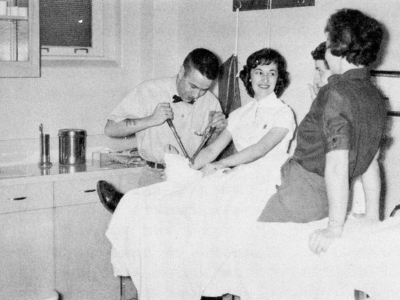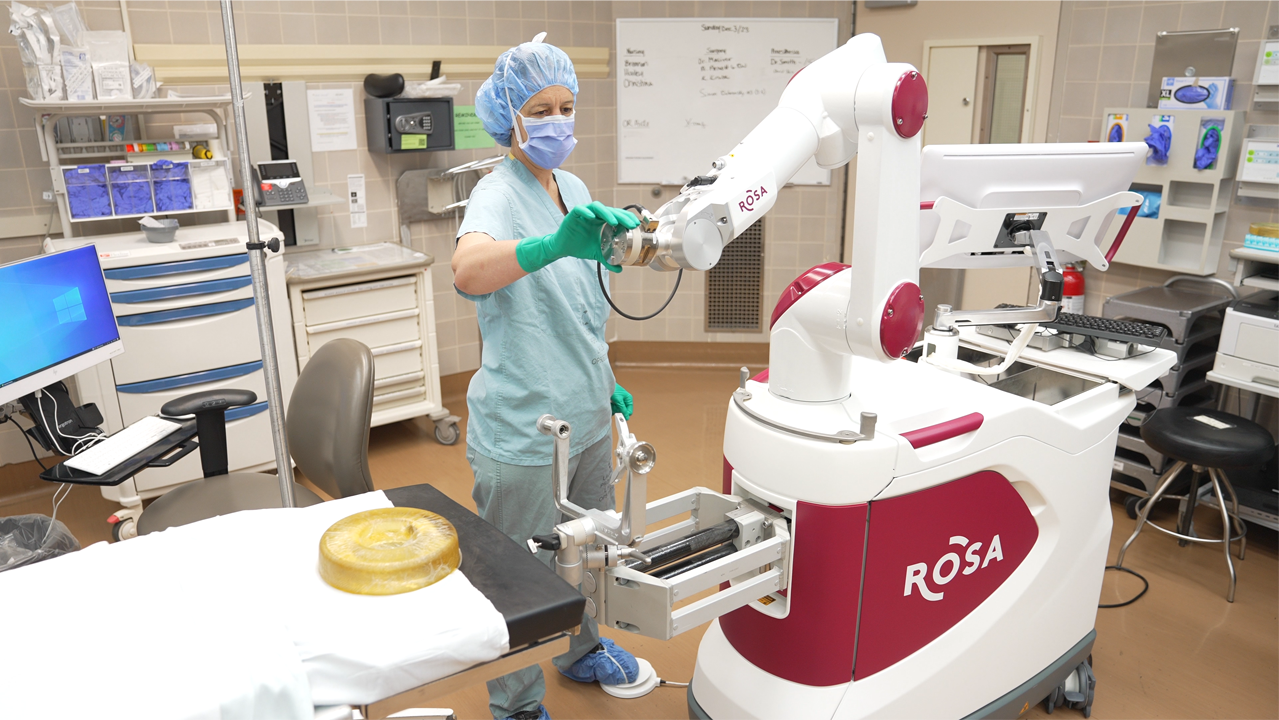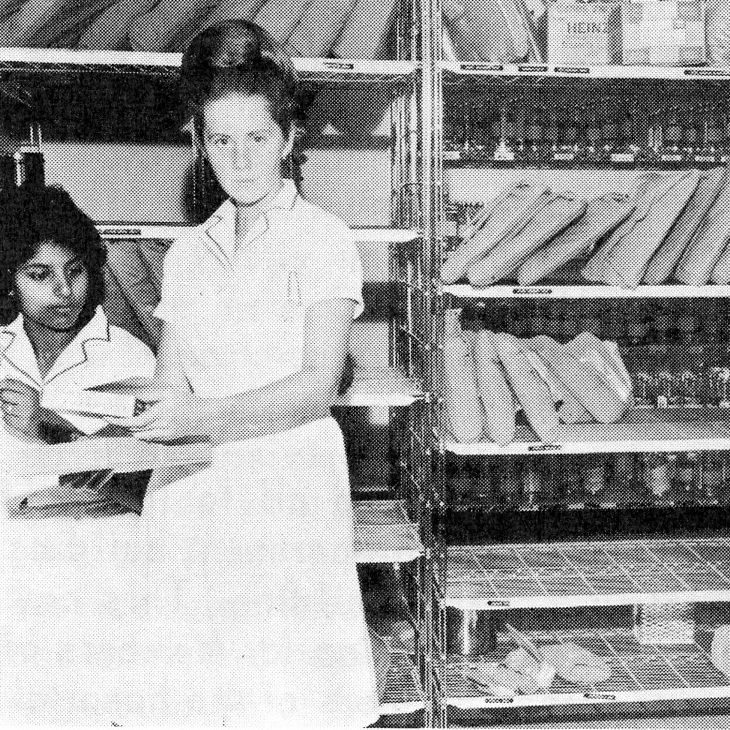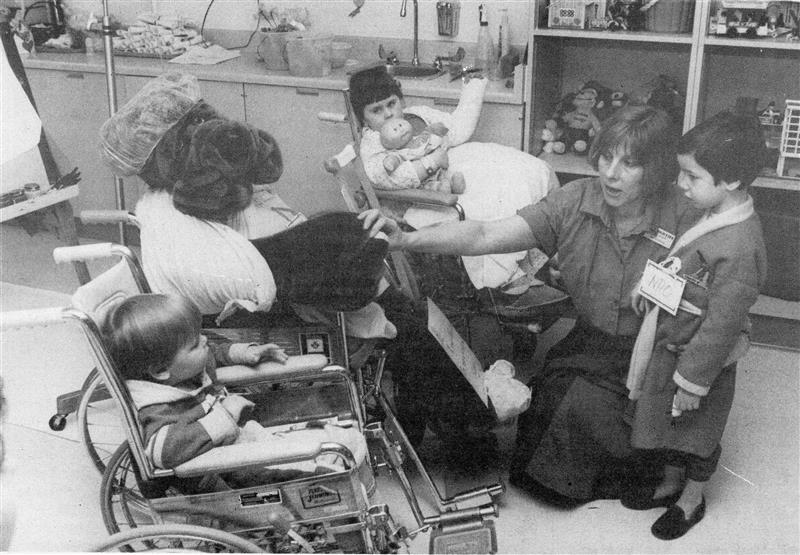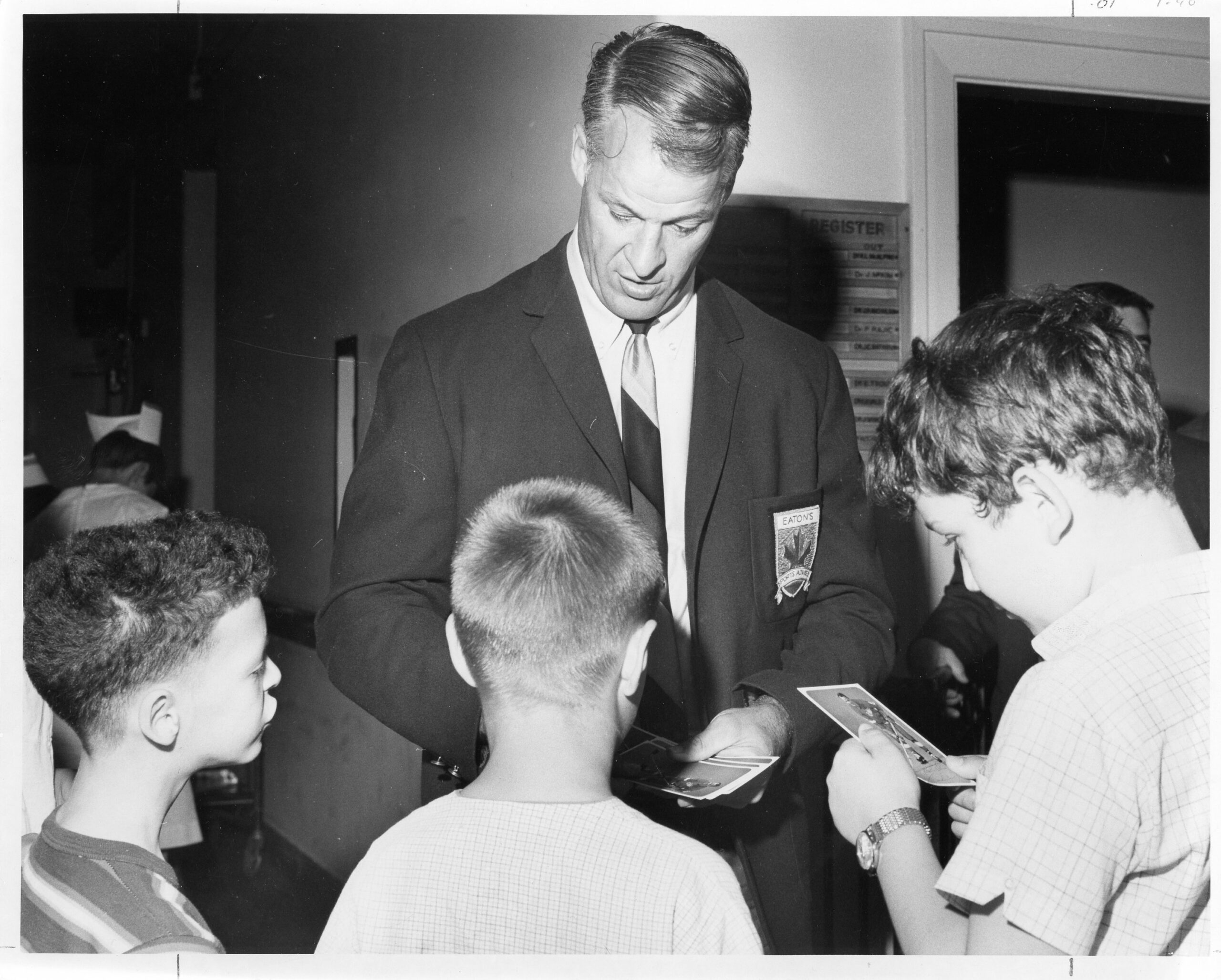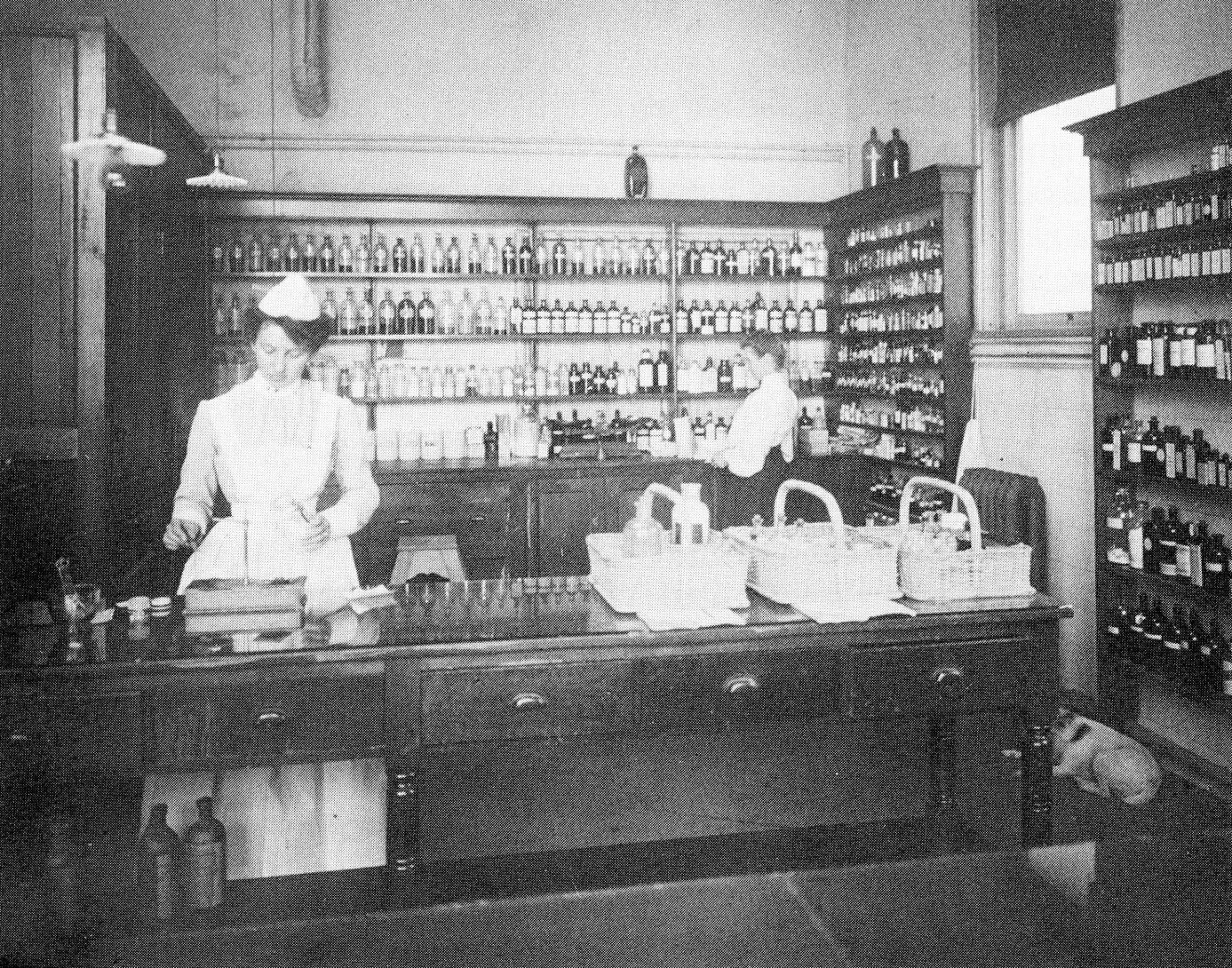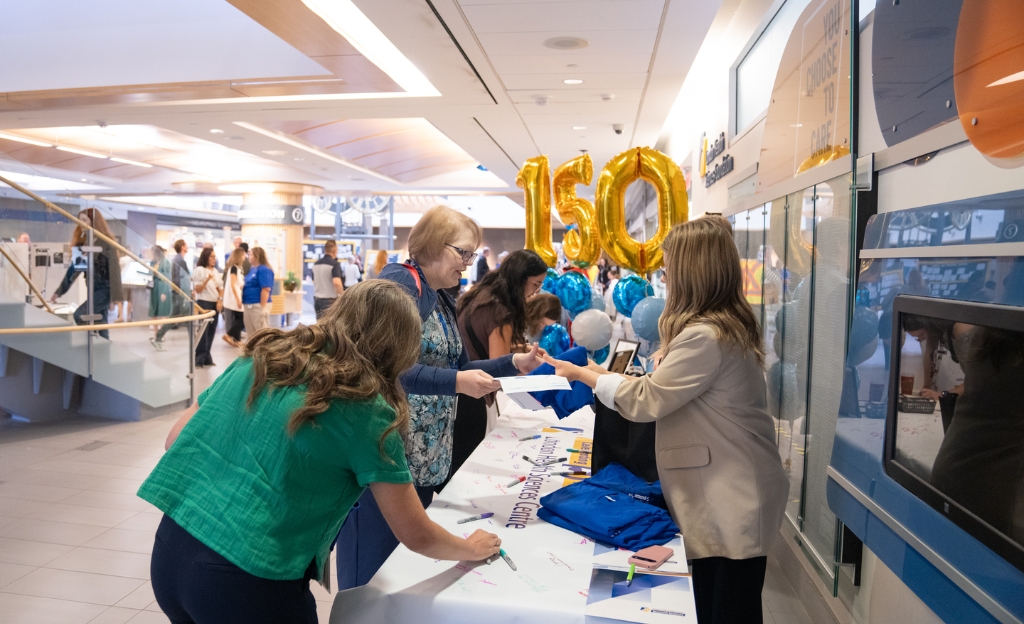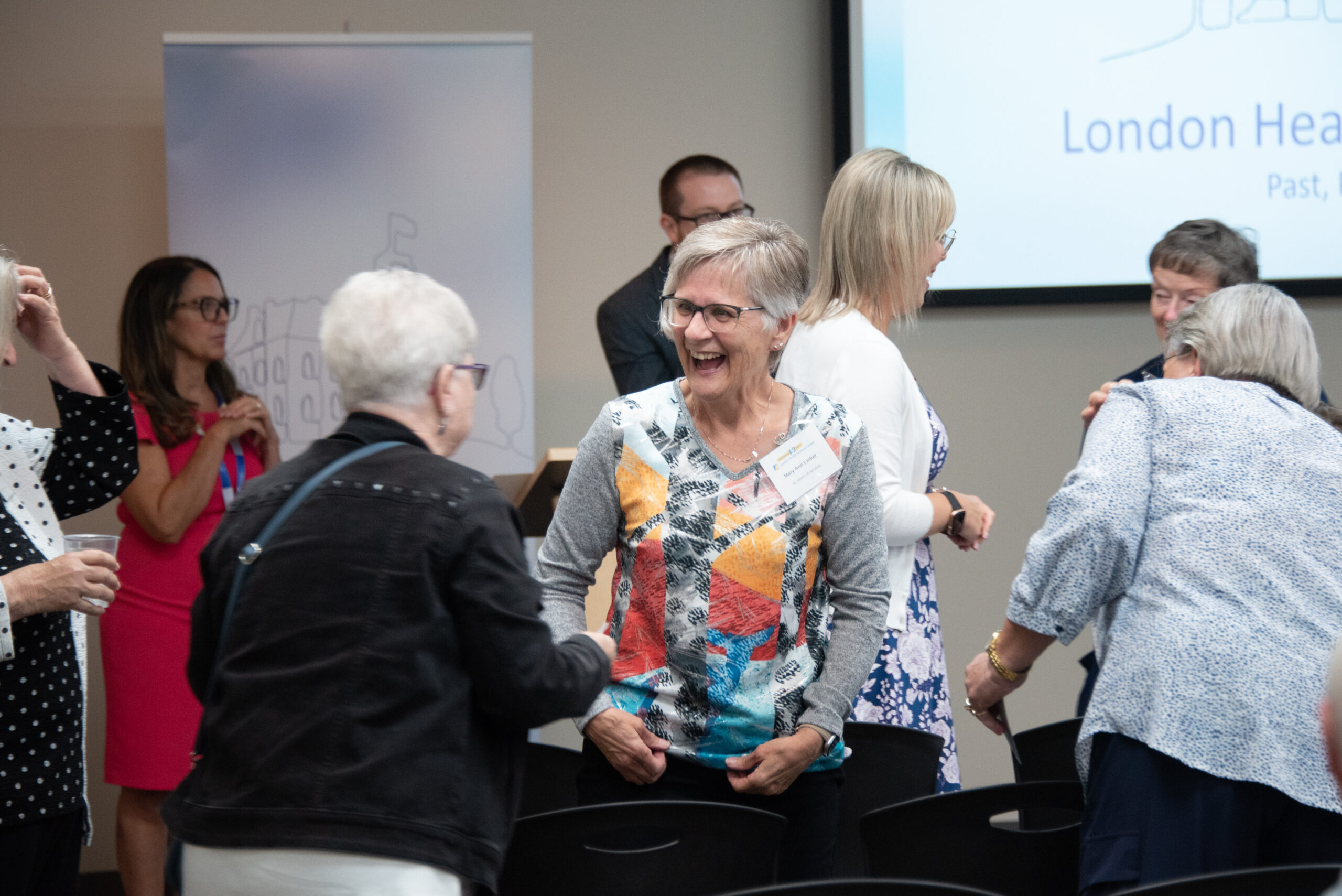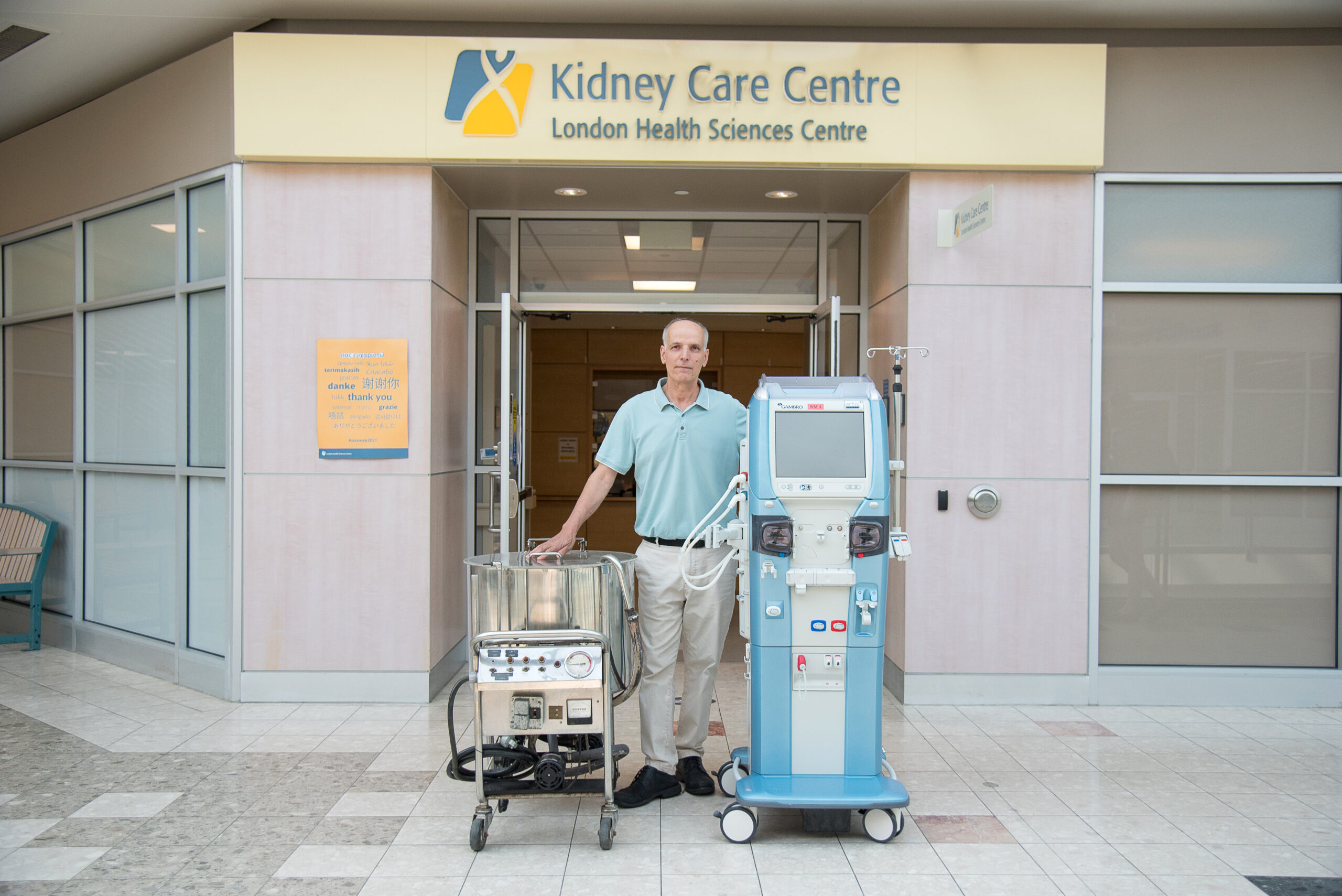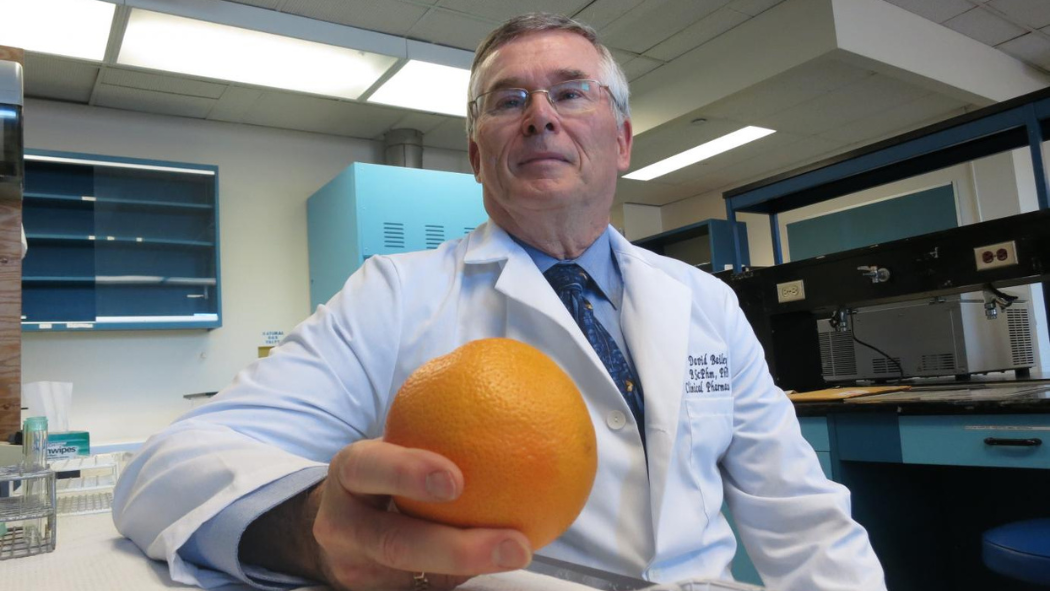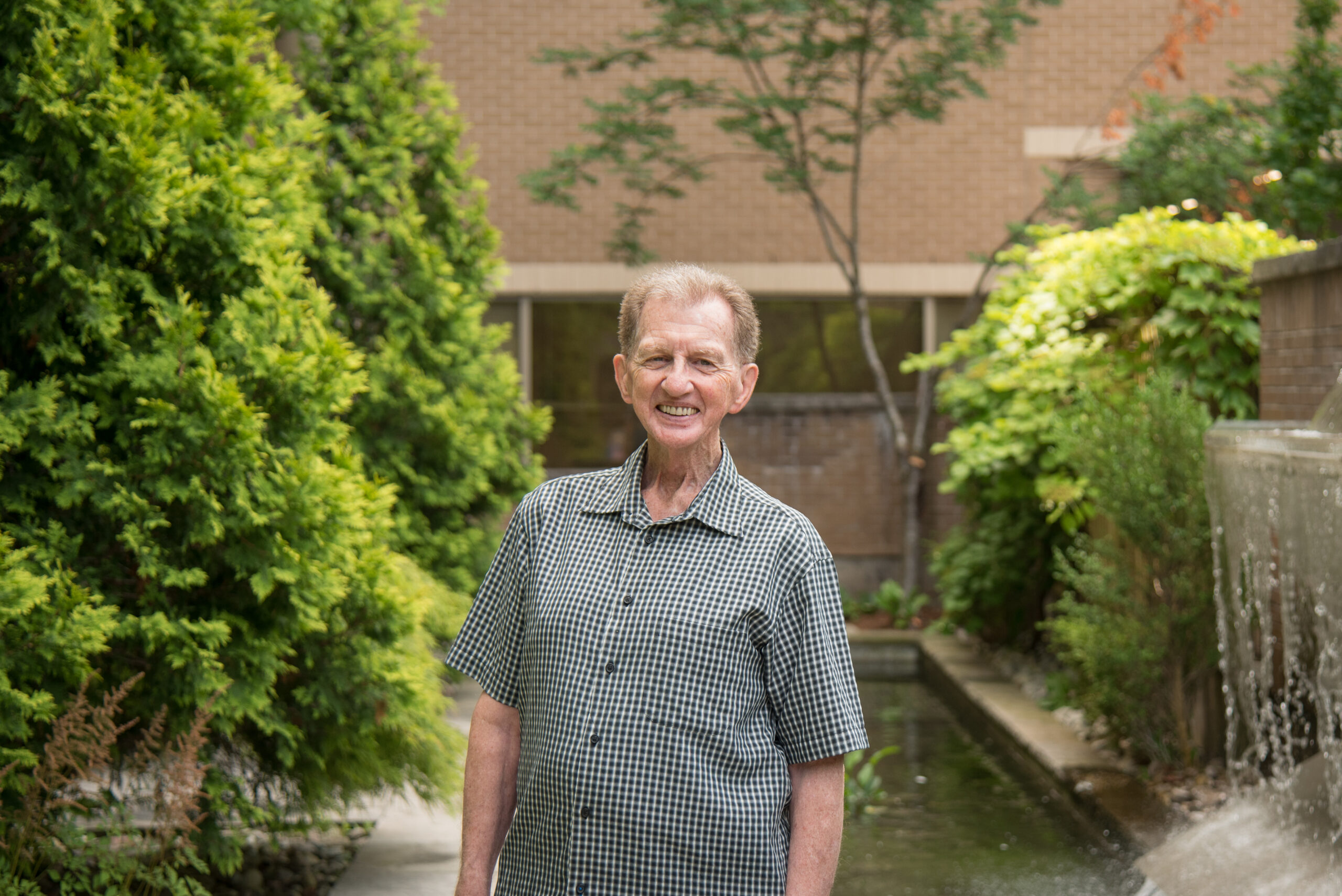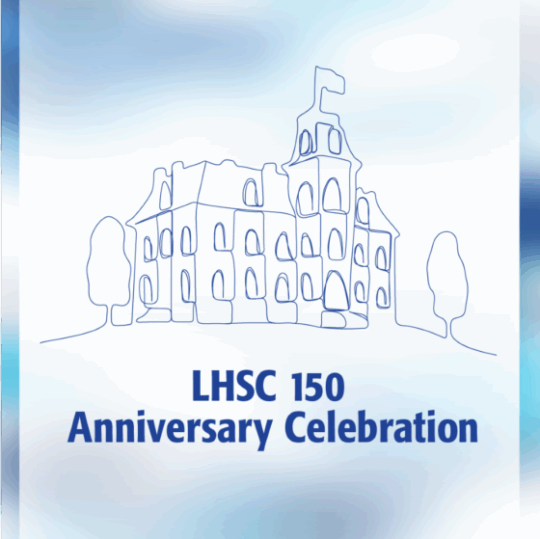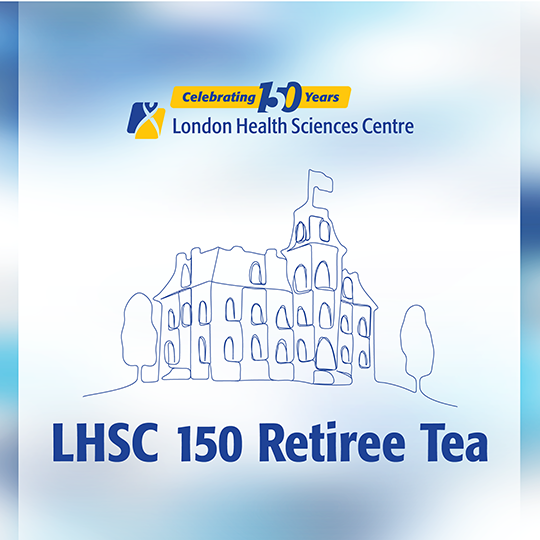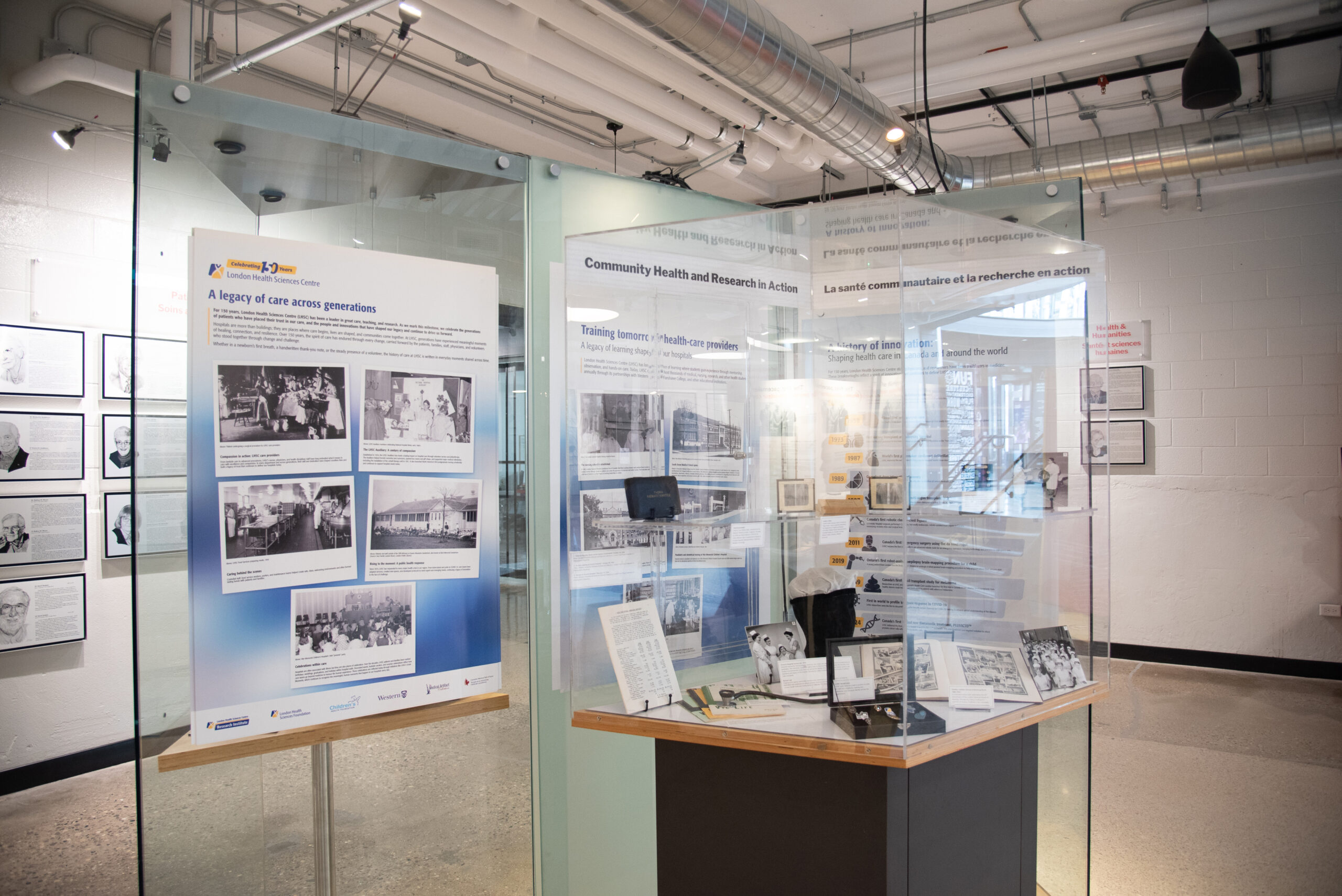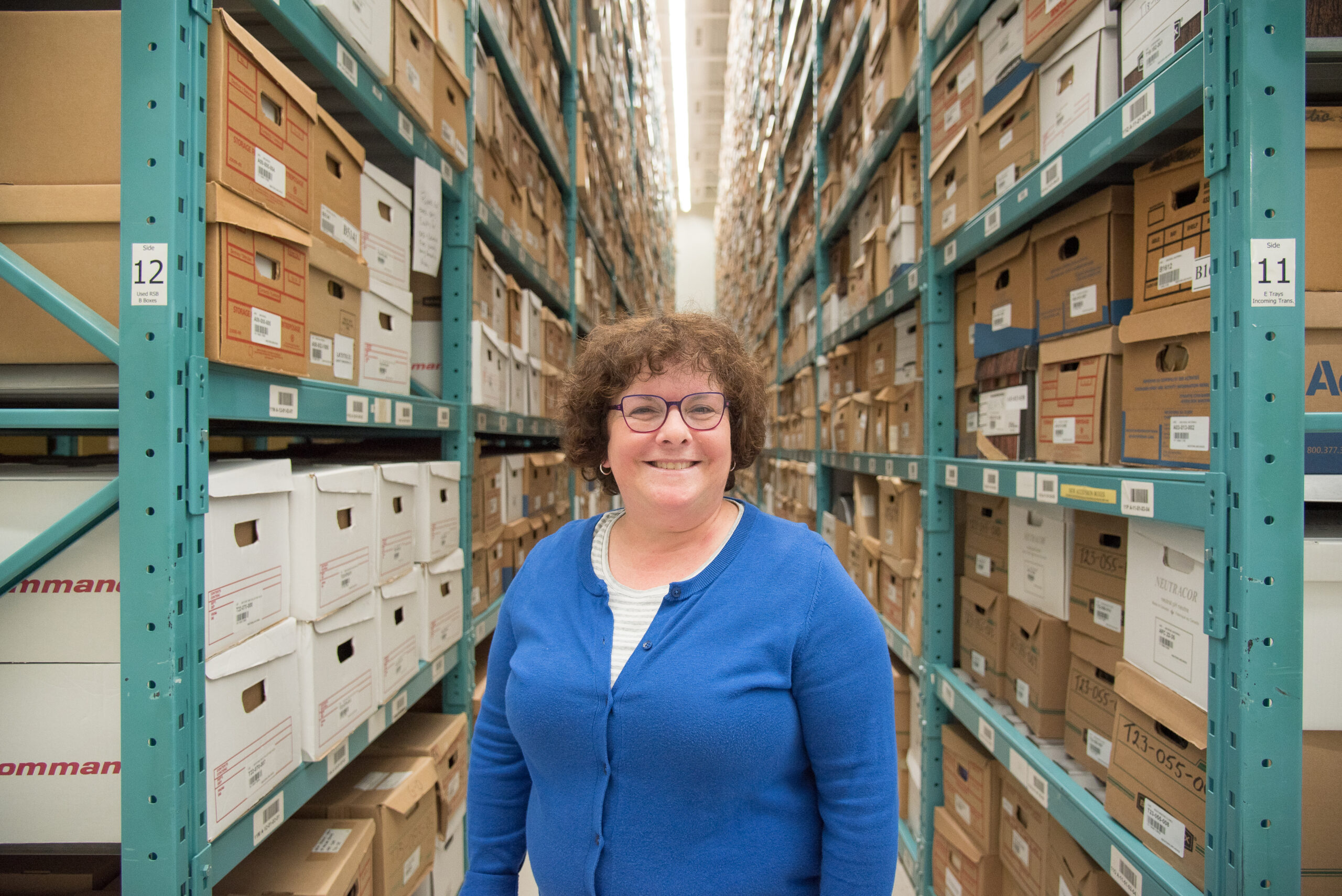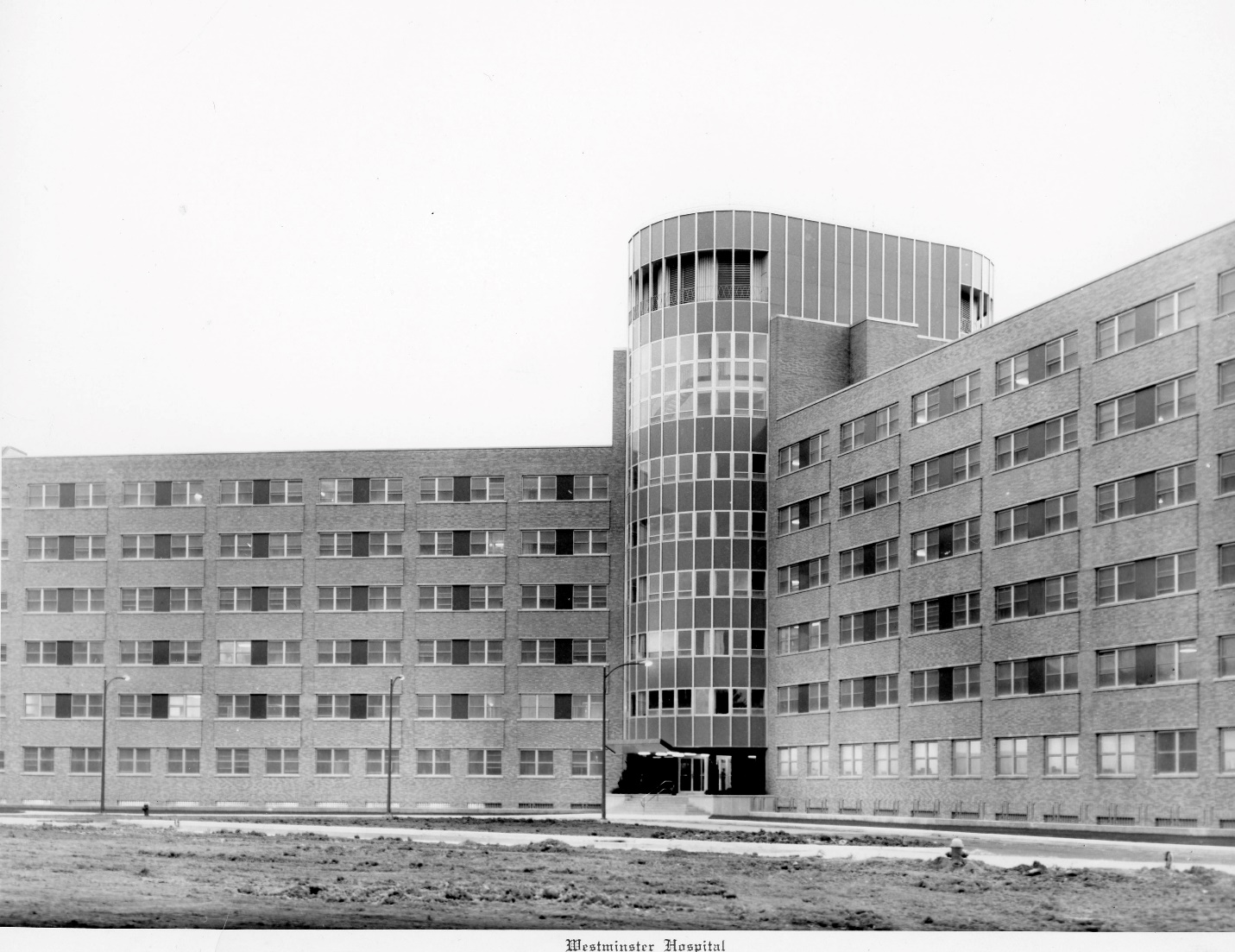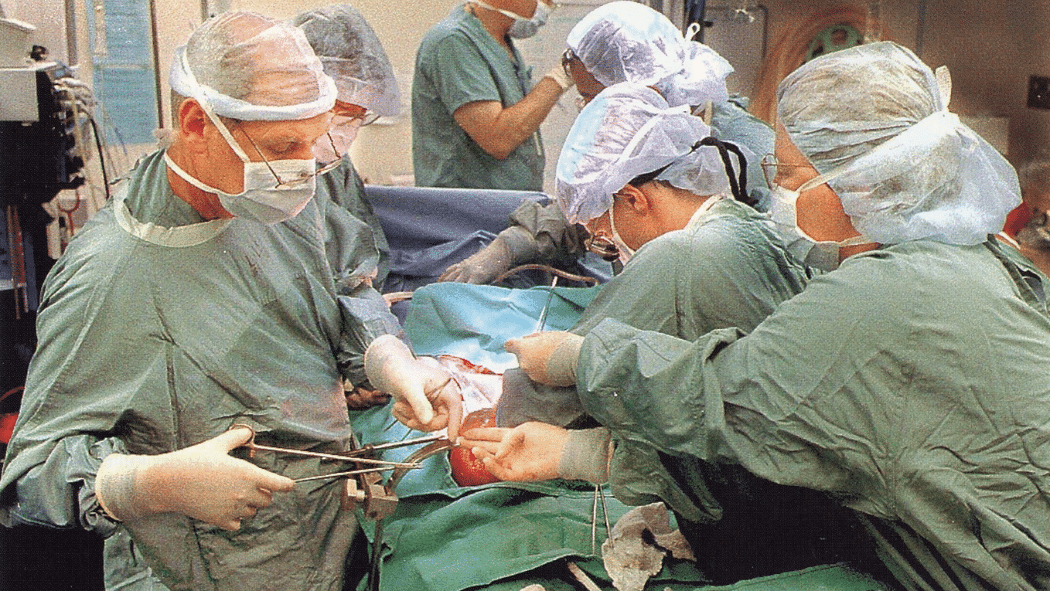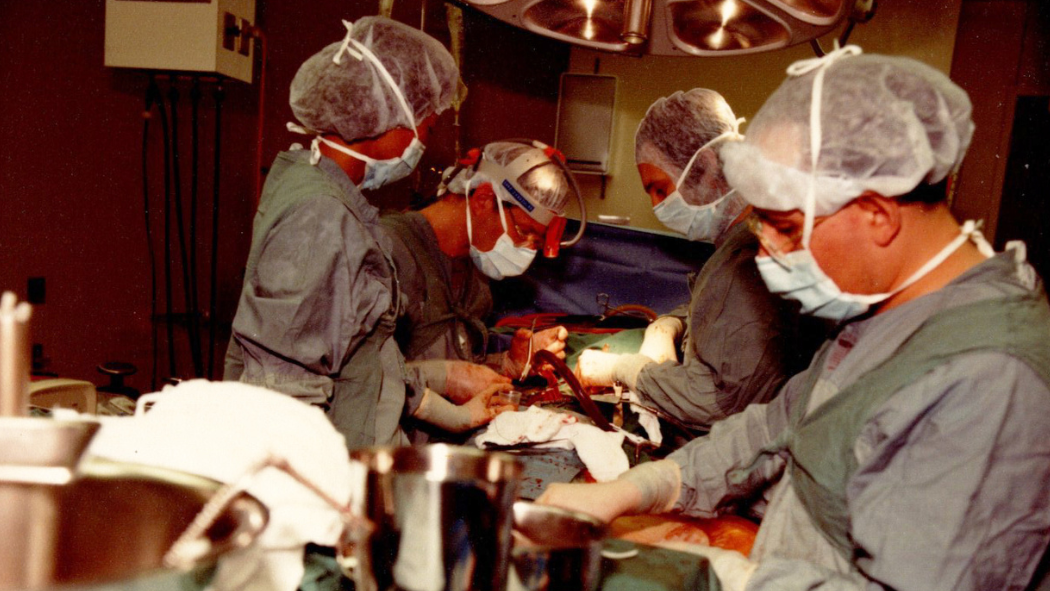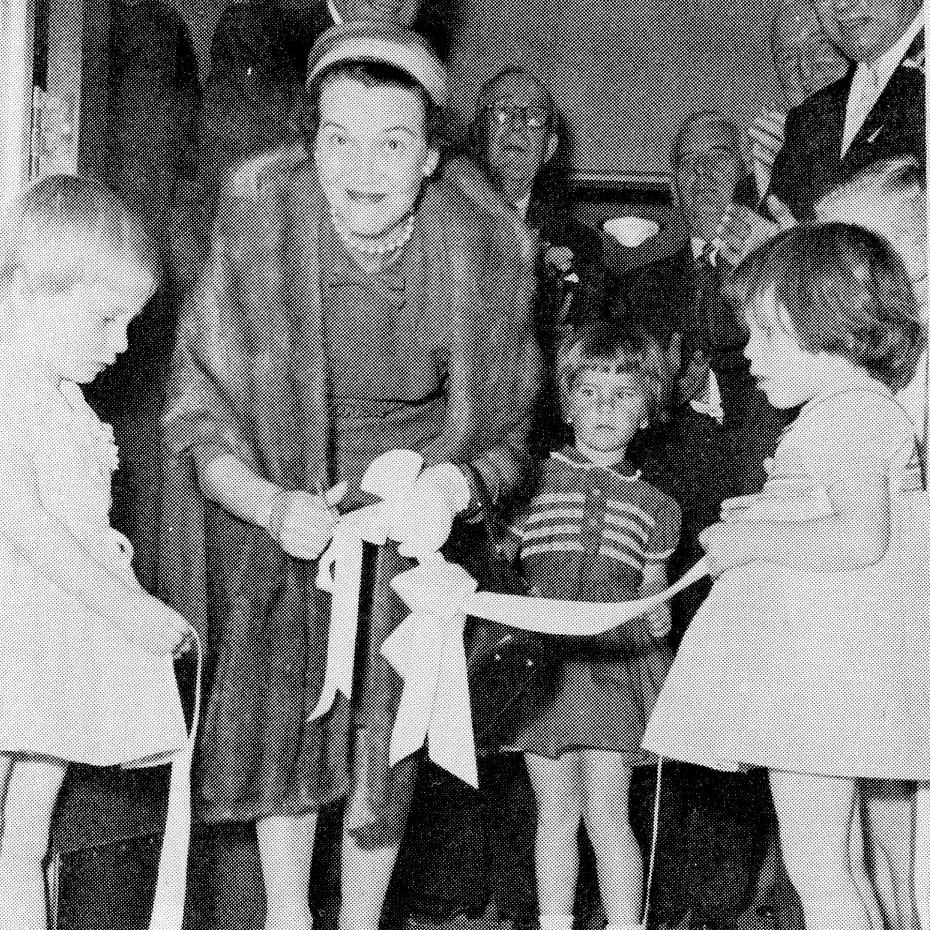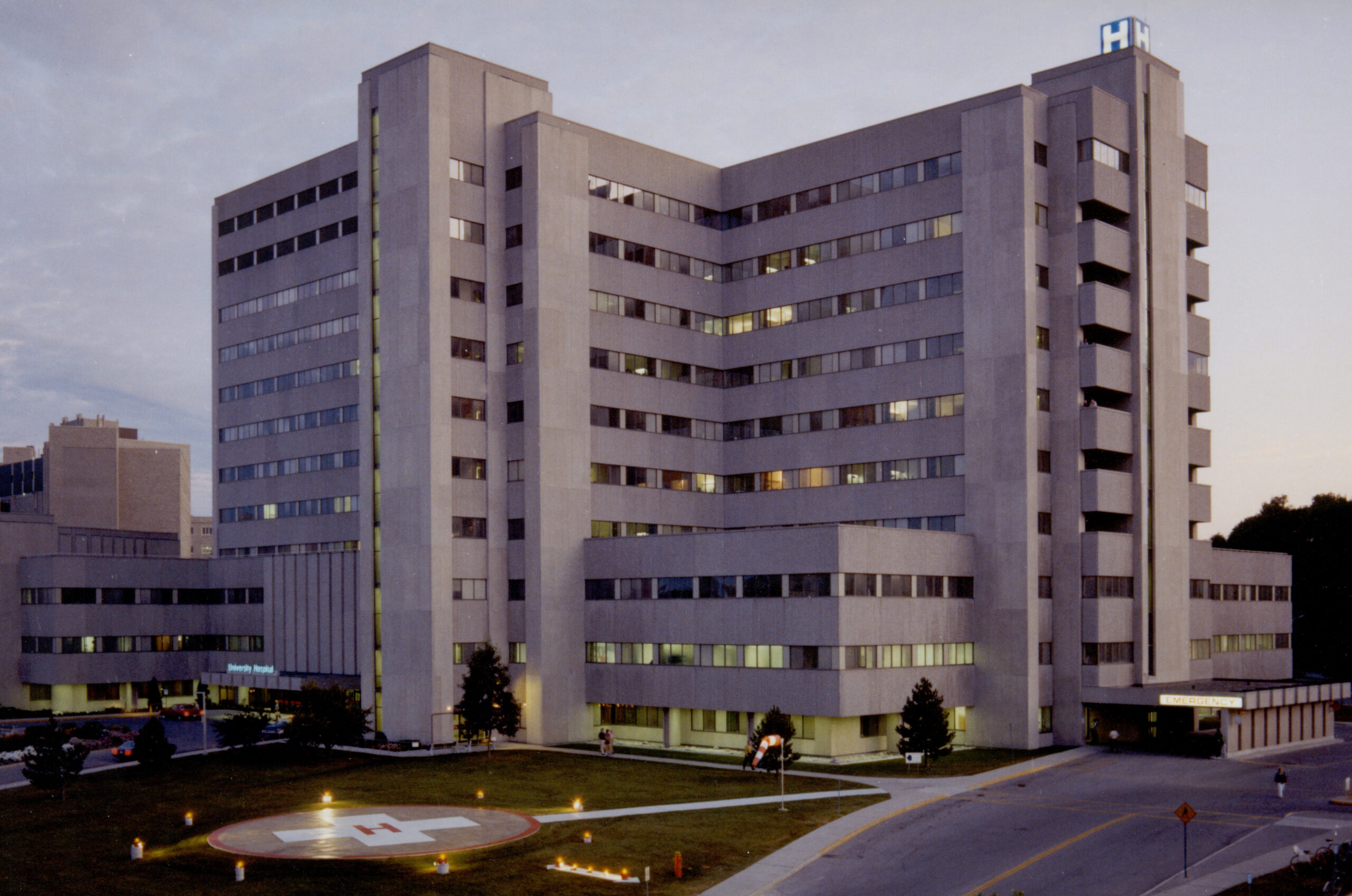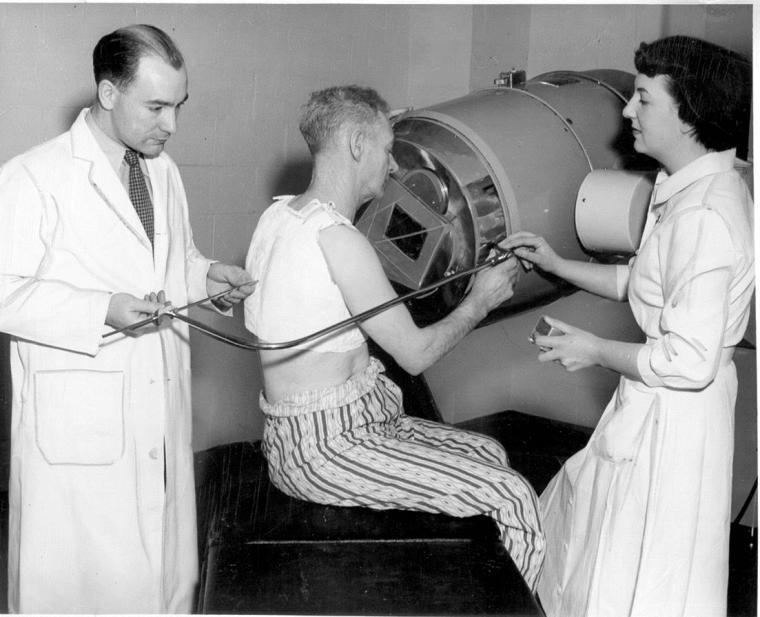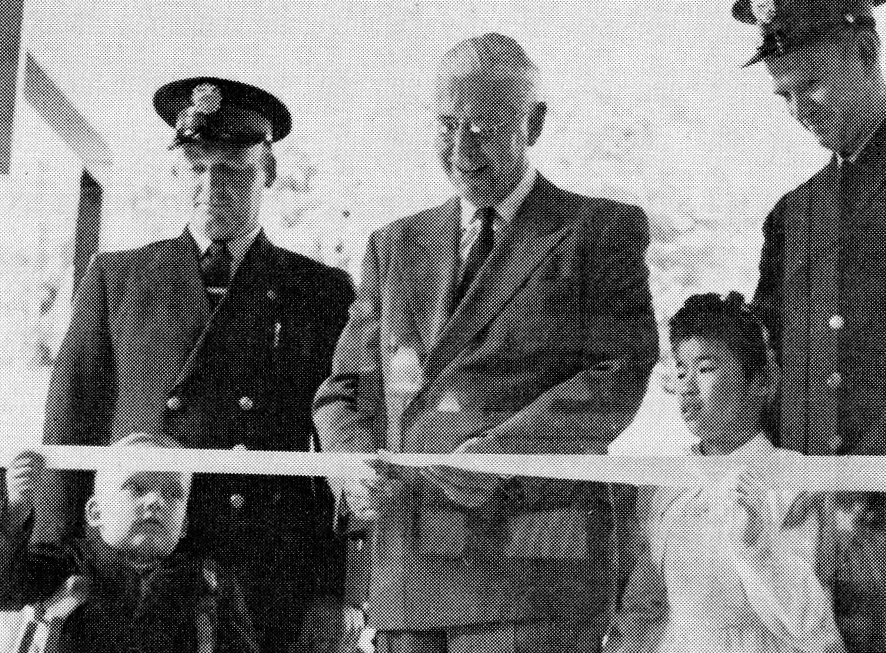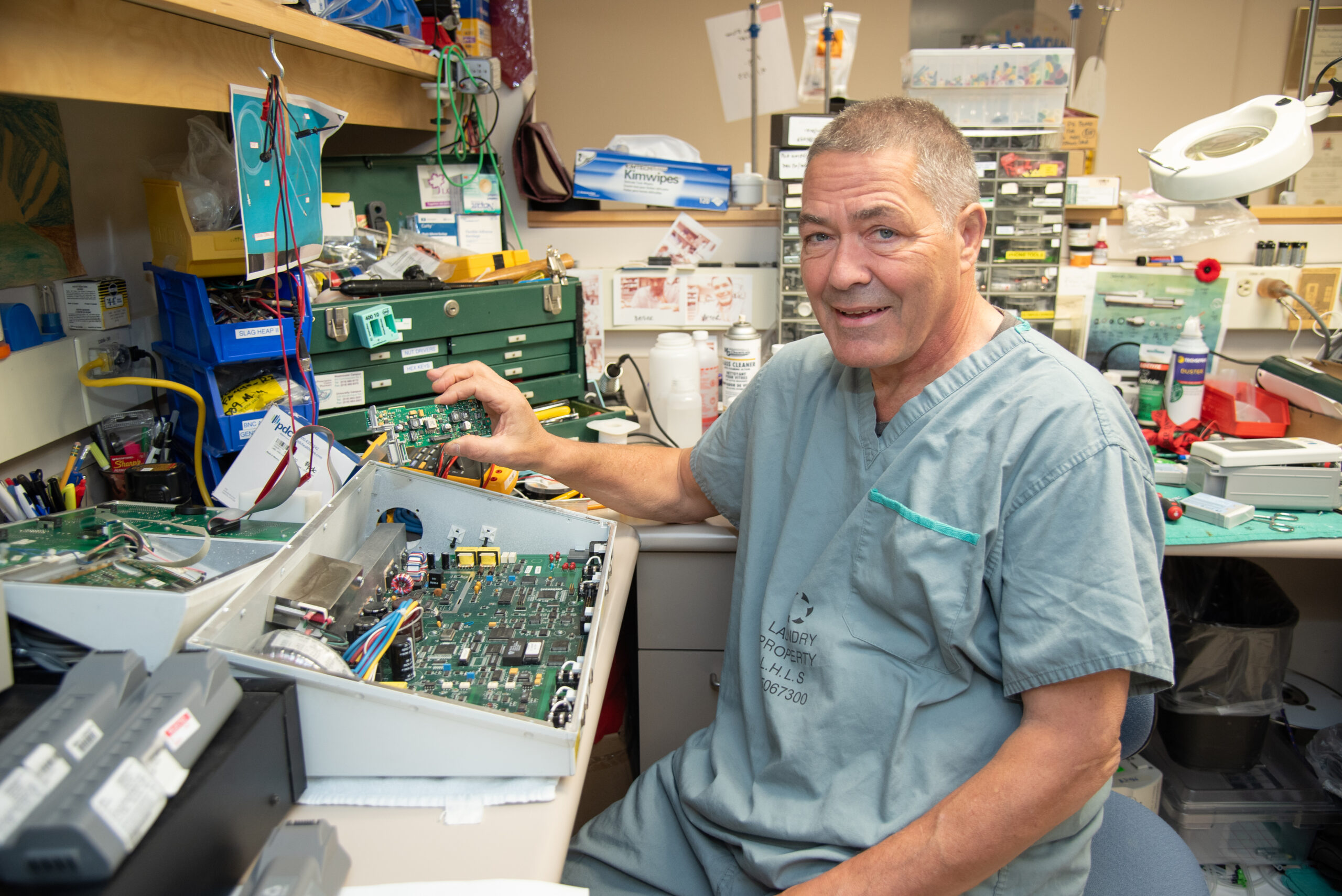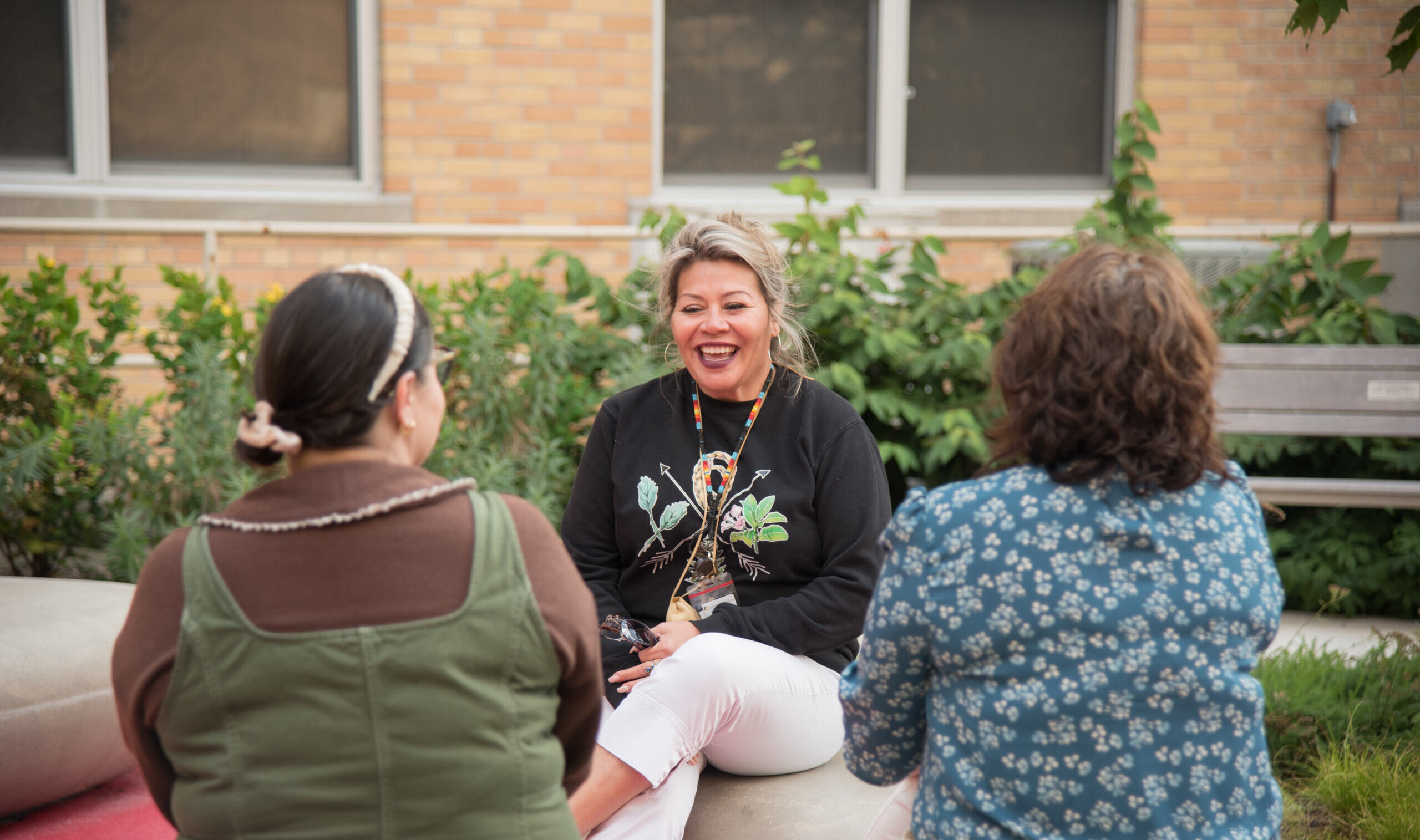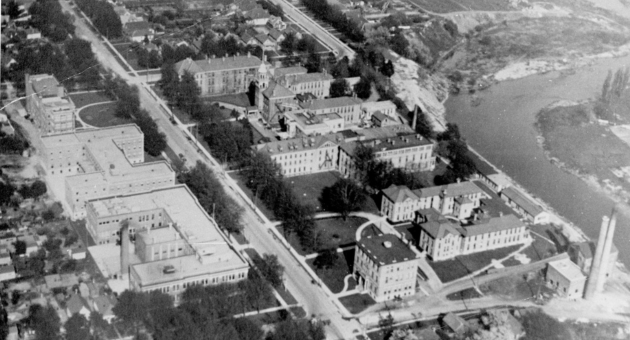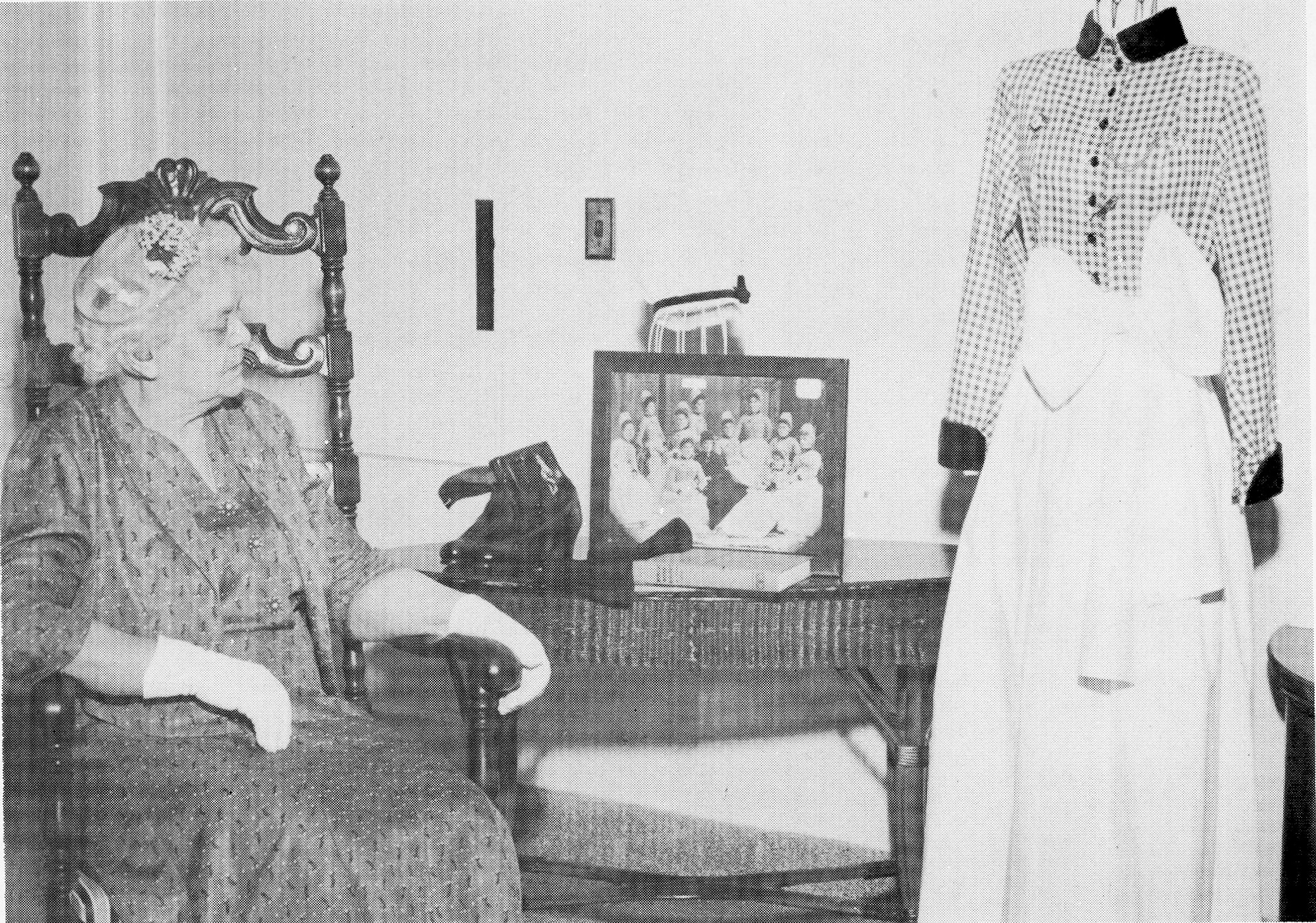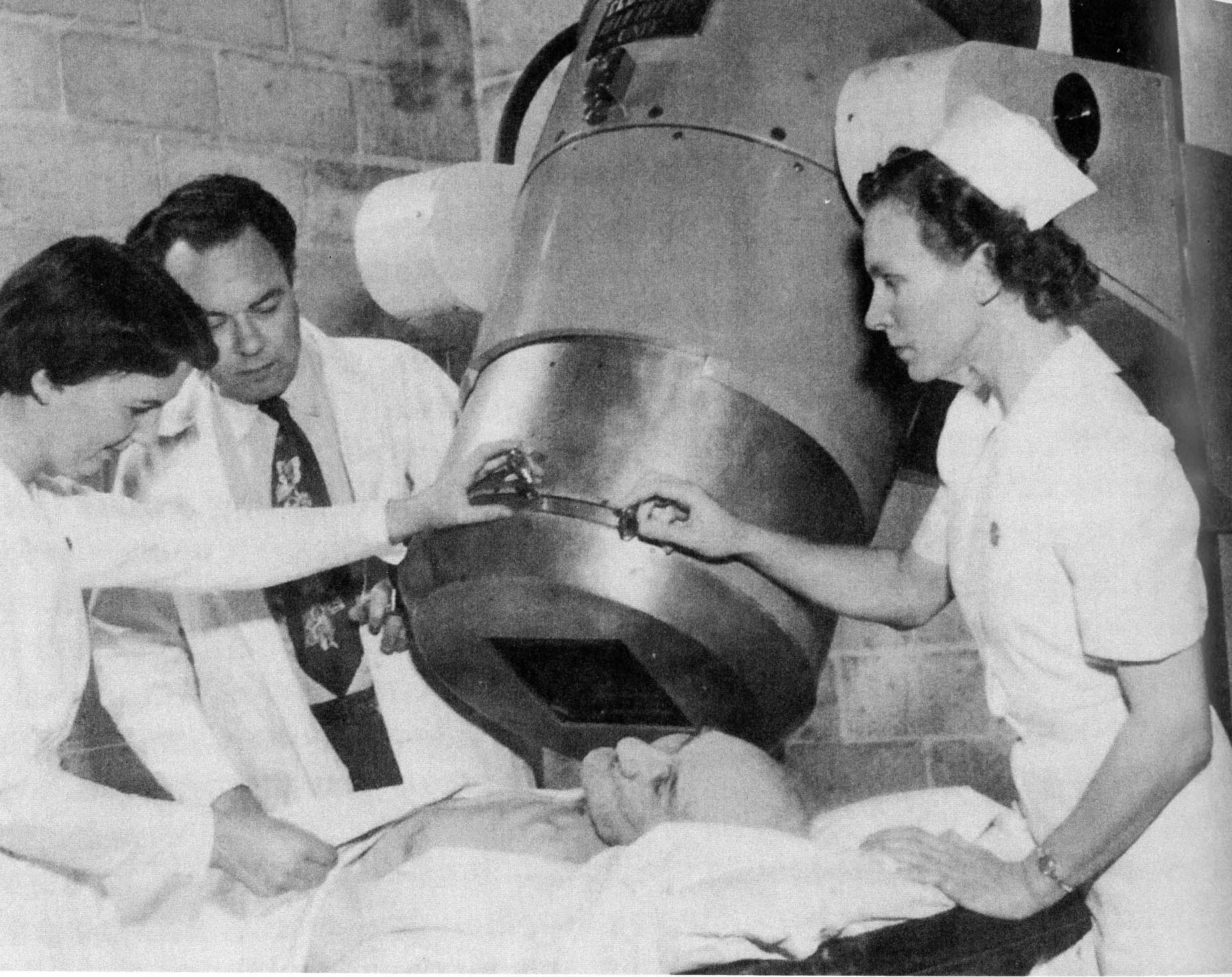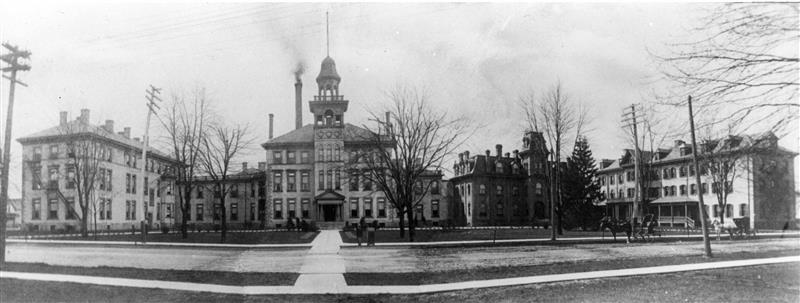LHSC 150: Patient Safety in leaps and bounds
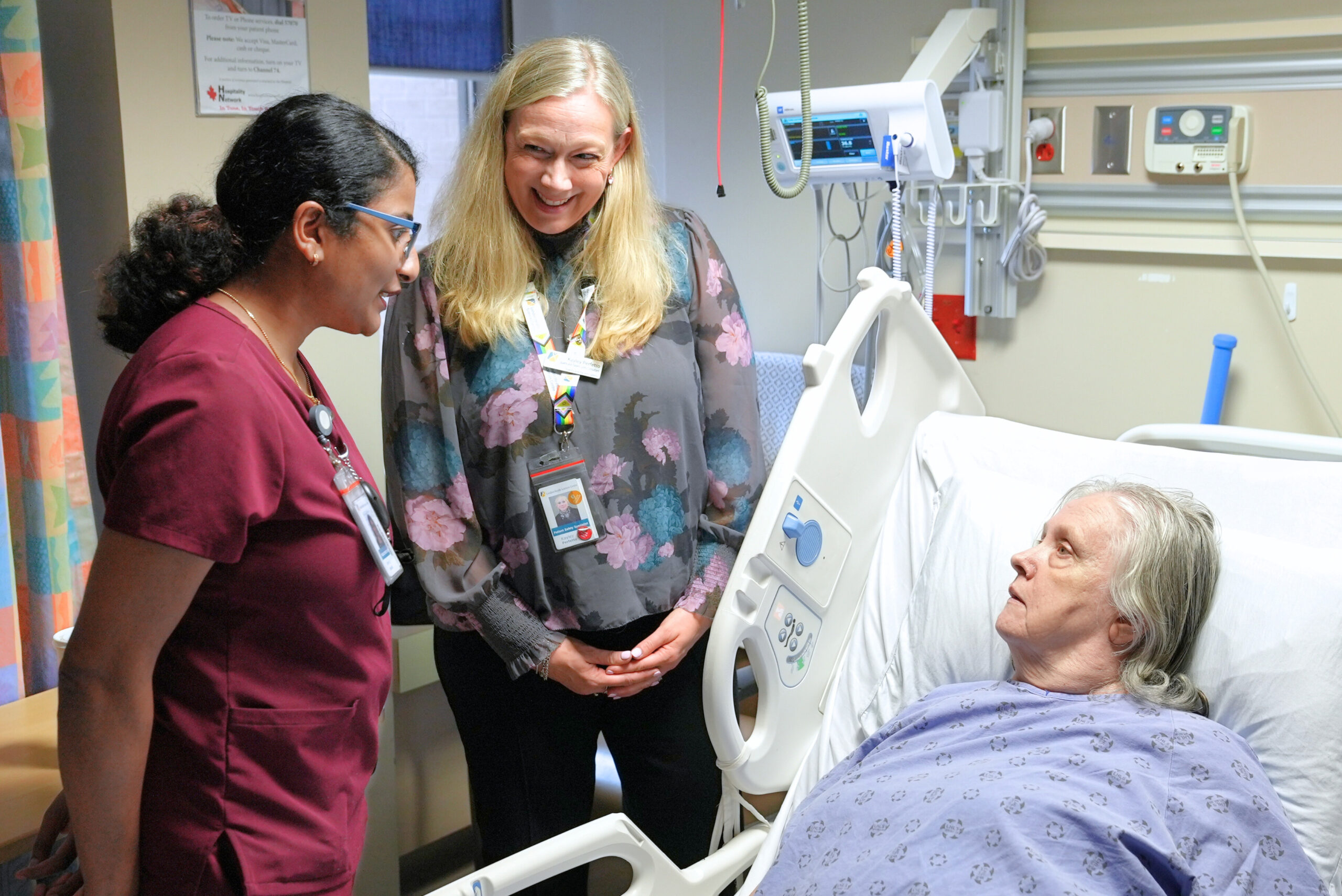
Above: Carolyn Dykeman speaks with Remiya Joseph, a registered nurse and Kayley Perfetto, an improvement specialist about patient safety.
What is patient safety?
London Health Sciences Centre (LHSC) has a long history of focusing on improving patient care and experience and a key contributor to both is holding patient safety as a priority.
Patient safety as a concept developed in the early 2000s with worldwide recognition that patient harm can occur within hospitals. Historically, patient safety was focused on responding to patient safety issues after the fact. Over the past 25 years, through research and advancements, a proactive approach to patient safety has taken shape, focused on preventing injury before it happens. With this shift in approach, there is now greater attention to the role that the health-care system plays in patient safety.
Specializing in patient safety
As significant shifts in patient safety were happening nationally and internationally, Kayley Perfetto was just beginning her career as a physiotherapist.
While working as a physiotherapist, she interacted with patients who had experienced health-care related injuries. She also had a close relative experience a patient safety issue in-hospital. These experiences drove her passion for patient safety.
Perfetto joined LHSC in 2017 as a Patient Safety Consultant and is now an Improvement Specialist supporting various departments and corporate committees including the Falls Prevention Committee and Pressure Injury Prevention Committee. These committees recommend and implement best practices across the hospital to help mitigate the occurrence of patient falls and pressure injuries.
“A lot has changed in the last two decades,” she says. “We have seen a transition from a risk-based, reactive focus to a proactive, preventative approach where improving safety is everyone’s responsibility across the hospital.”
The concept of safety being everyone’s responsibility has been the focus of several campaigns Perfetto has supported over the past six years, including the “We all have a role to play in patient safety” video and feature series.
Perfetto recently completed her PhD in Health Quality at Queens University with a focus on patient safety, specifically improving care partner engagement in patient safety. In her academic work, she examines the essential role families and patients have in improving patient safety.
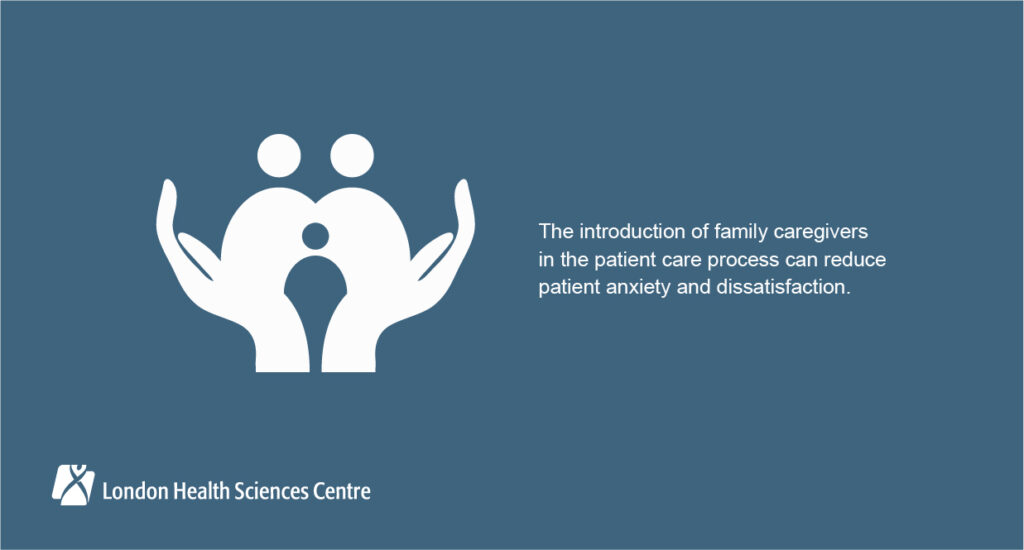
“When we encourage patients and family members to speak up and participate in patient safety discussions, we can enhance patient safety at the point of care,” Perfetto says.
A significant part of her role at LHSC is to help identify opportunities for improving the environment to encourage this.
“There is always room for improvement,” says Perfetto. “We need to optimize every possible safety strategy, which includes greater engagement of patients and families at the direct care level.”
History of keeping patients safe – a whole hospital approach
Historically, the notion of keeping patients safe was focused on providing and improving quality patient care. The Accreditation process sets standards of care and safety. An Accreditation requirement is for hospitals to demonstrate how they continue to improve safety and care through various projects, policies and processes.
Accreditation in hospitals was initially started by the American College of Surgeons in 1918 as a means to standardize medical records. This slowly evolved and in the 1950s a Joint Commission on Accreditation of Hospitals in Canada and the United States was formed to encourage voluntary adherence to high standards in the provision of care.
This commission led to the creation of what is now known as Accreditation Canada. Since receiving Accreditation by the Joint Commission in 1956, London Health Sciences Centre has frequently done well in these surveys, exceeding standards to receive exemplary distinction.
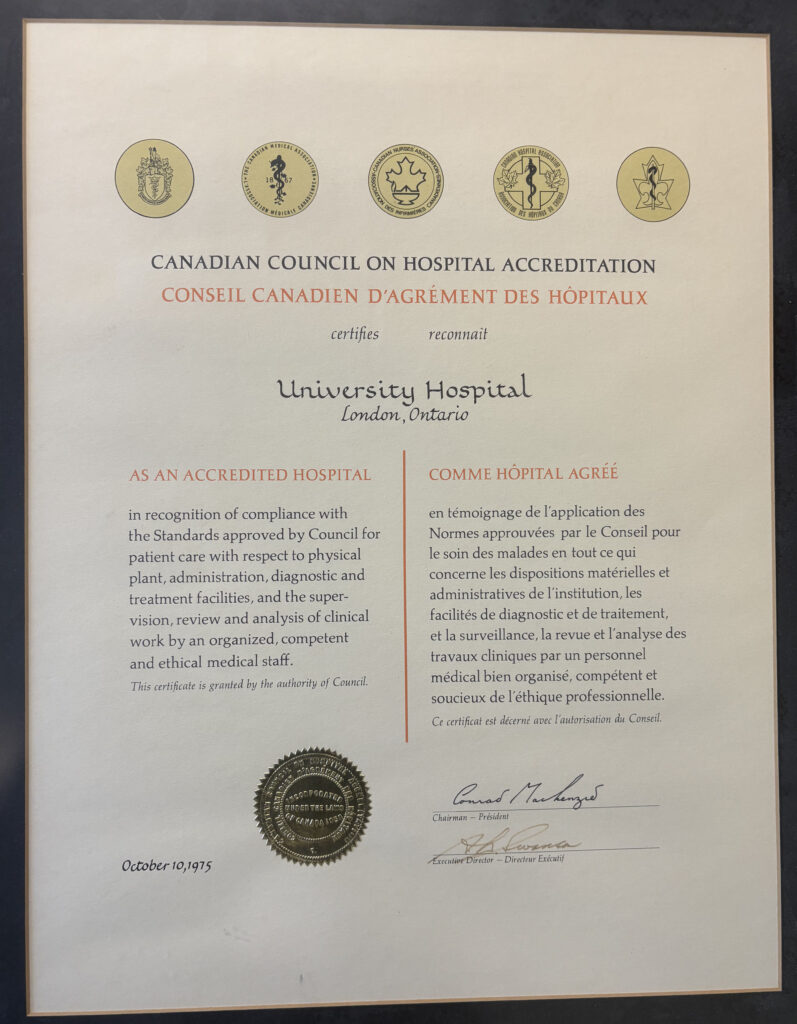
This commitment to high quality and safe patient care evolved once again in the 1980s with a focus on quality assurance, which was a method for measuring standards and implementing actions and processes to meet and improve those standards. In 1984, LHSC implemented a Quality Assurance program across the organization as well as within each department to “ensure that all aspects of a patient’s care were optimal,” according to the Quality Assurance Steering Committee.
Nationwide campaign to shift safety of care
For over two decades, LHSC has supported advancements in patient care nationally. Some of the earliest work began in 2005 when LHSC participated in the Canada-wide campaign “The Safer Healthcare Now!”, launched by the Canadian Patient Safety Institute. The purpose of the campaign was to provide support to health-care providers and organizations while refocusing their quality assurance programs to implement best practices to improve patient safety. LHSC implemented various areas of focus in the campaign as a strategic priority for the organization.
Since the initial campaign, the Canadian Patient Safety Institute, now known as Healthcare Excellence Canada, launched Canadian Patient Safety Week which continues to be observed each year. LHSC participates and hosts an annual Patient Safety Champion Awards ceremony highlighting the projects members of Team LHSC undertake to improve patient safety. This year, over 70 nominations were received from across the organization.
Patient Safety continues to be a primary focus for LHSC today, nearly two decades later.
LHSC is celebrating 150 years of care, innovation, and community impact by sharing 150 moments from our history. Join us in marking this milestone by sharing your own LHSC story.

